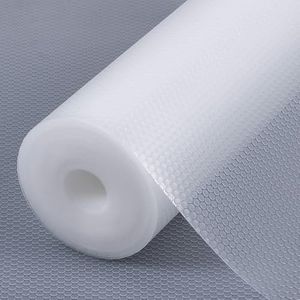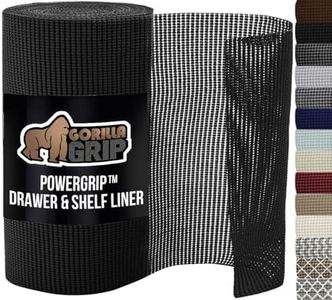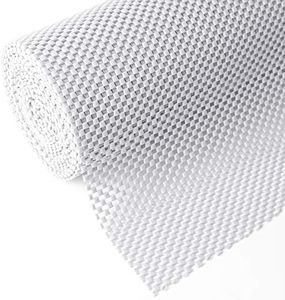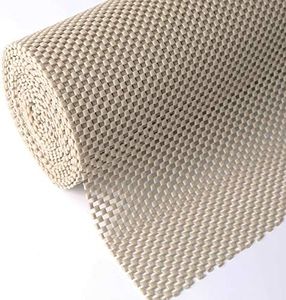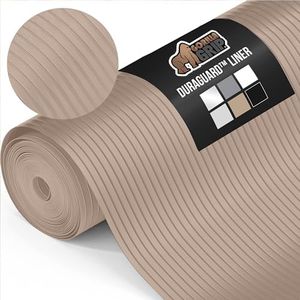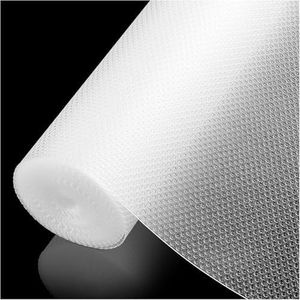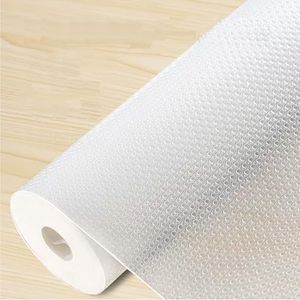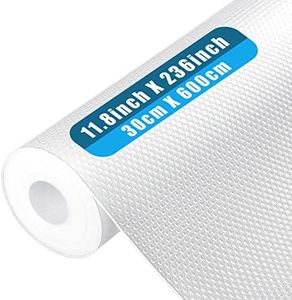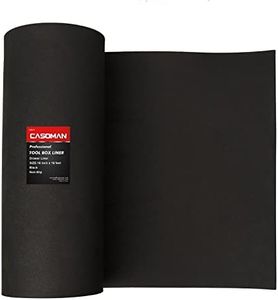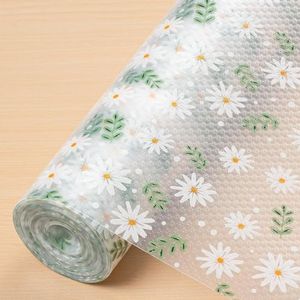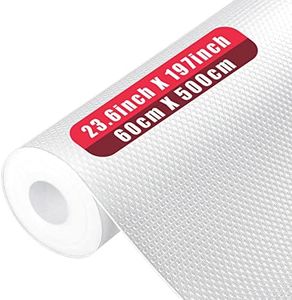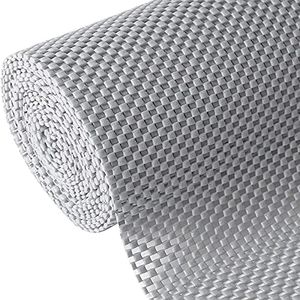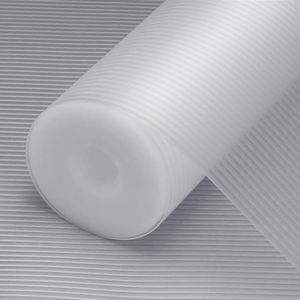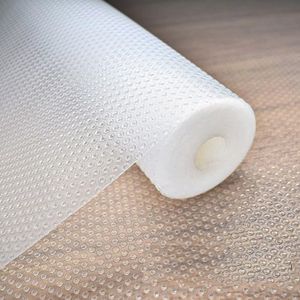We Use CookiesWe use cookies to enhance the security, performance,
functionality and for analytical and promotional activities. By continuing to browse this site you
are agreeing to our privacy policy
10 Best Drawer Liners
From leading brands and best sellers available on the web.Buying Guide for the Best Drawer Liners
Choosing the best drawer liner for your needs can make your drawers more organized, protect your surfaces, and even add a touch of style. Since drawer liners come in a variety of materials and designs, it's important to think about what you plan to store, how often you clean your drawers, and whether you want something decorative or strictly functional. Taking the right approach means considering your purpose for lining your drawers, whether it's to keep things from sliding, to guard against spills and crumbs, or to freshen up the look of your cabinets and drawers. Carefully reviewing the key features of drawer liners ensures your choice will keep your spaces clean and efficient for daily use.MaterialThe material of a drawer liner determines its durability, feel, and suitability for different uses. Drawer liners generally come in materials like plastic, rubber, felt, fabric, or paper. Plastic and rubber liners are easy to wipe clean and often non-slip, making them a good choice for kitchen or bathroom drawers where spills are likely. Felt and fabric liners offer a softer surface, ideal for delicate items like jewelry or silverware, but may require more maintenance as they can trap dust. Think about what you’ll be storing — for heavy or potentially messy items, durable and washable materials make the most sense, while for valuables or decorative purposes, softer options might be better.
ThicknessThickness refers to how dense or 'cushiony' the liner is. Thinner liners are discreet and easy to cut, fitting neatly without raising the surface too much, which is good for shallow drawers or ones that need a tight close. Thicker liners provide more cushioning, ideal for protecting fragile items or preventing movement, but might not fit in all drawers and can take up valuable space. When picking the right thickness, consider the items you plan to store and the height of your drawers—choose thicker liners if protection is key, and thinner ones where space is limited or a lower profile is preferred.
Grip/Non-Slip FeatureThe grip or non-slip feature describes how well the liner stays in place and whether it keeps your items from sliding around. Non-slip liners typically have a textured or rubberized bottom, making them ideal for drawers that hold utensils, tools, or any objects that might shift when the drawer is opened or closed. If you want a liner mainly for aesthetics or protection from dust, grip might be less important. However, if stability and order are your main concerns, prioritizing a non-slip liner will help keep everything in its place.
Ease of CleaningHow easy it is to clean your liner will affect your drawer's long-term hygiene and appearance. Some liners are washable or wipeable, made from plastic or vinyl, making them ideal for high-traffic or high-spill areas like kitchens and bathrooms. Others, such as felt or fabric liners, may need to be removed and washed separately or replaced over time. Consider how often you expect spills or crumbs and pick a liner that matches your willingness and ability to clean it regularly.
Cut-to-Size AbilityCut-to-size ability refers to how easily a liner can be trimmed with scissors to fit your exact drawer dimensions. Most liners are designed for this, but some thicker or more rigid materials may be more difficult to cut. If you have drawers of unusual or varied sizes, a liner that cuts easily allows for a snug fit and a tidier appearance. Consider your drawers: if they aren't standard sizes or if you want a perfect edge-to-edge fit, prioritize liners that can be easily trimmed.
Design and ColorDesign and color determine how your drawer liners will look and whether they add a decorative touch to your space. Liners range from plain and neutral to colorful patterns or textures. If you want your drawers to look clean and uniform, simple designs work well. If you wish to add some personality to your storage, explore bolder patterns or colors. The choice should reflect your style preferences and whether you want the liner to stand out or blend in.
